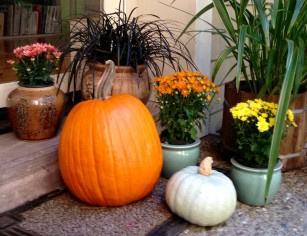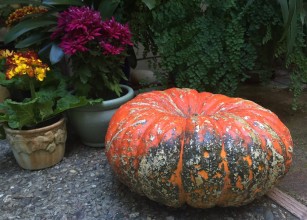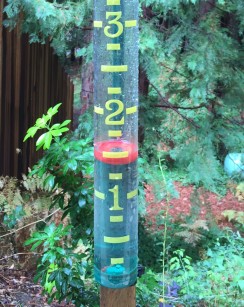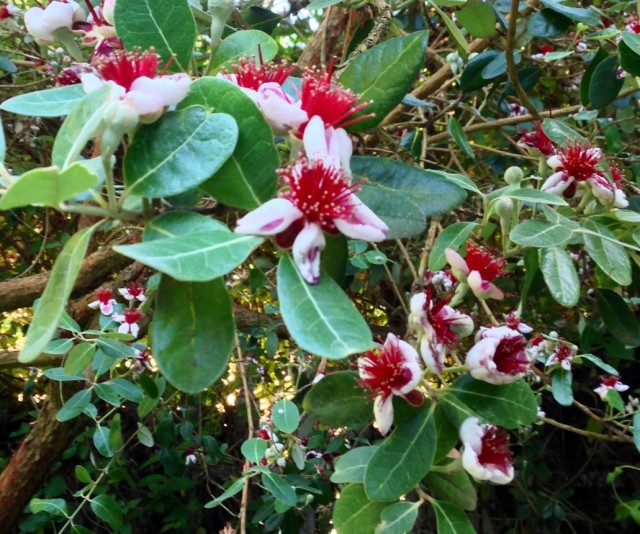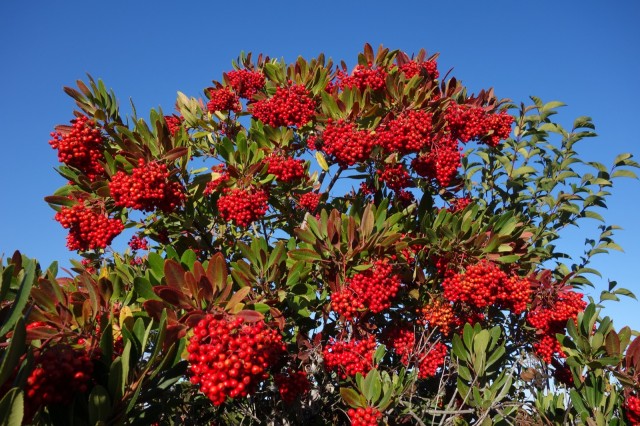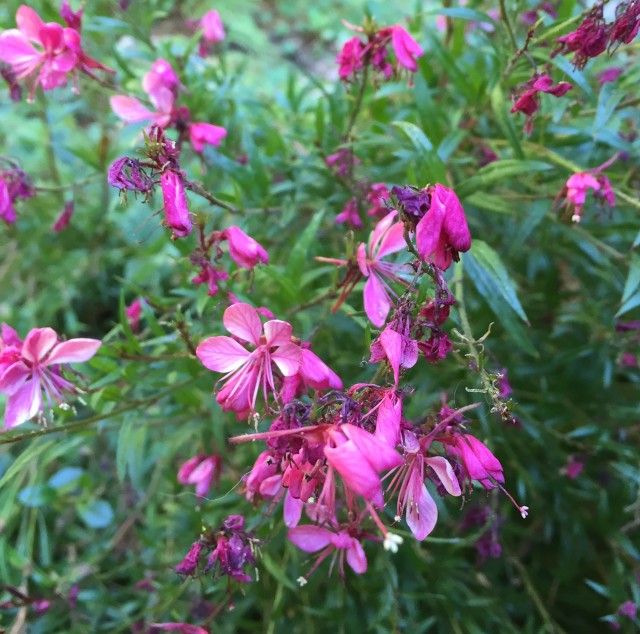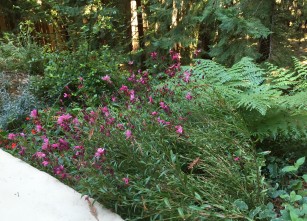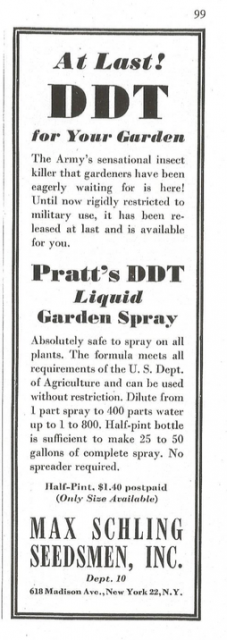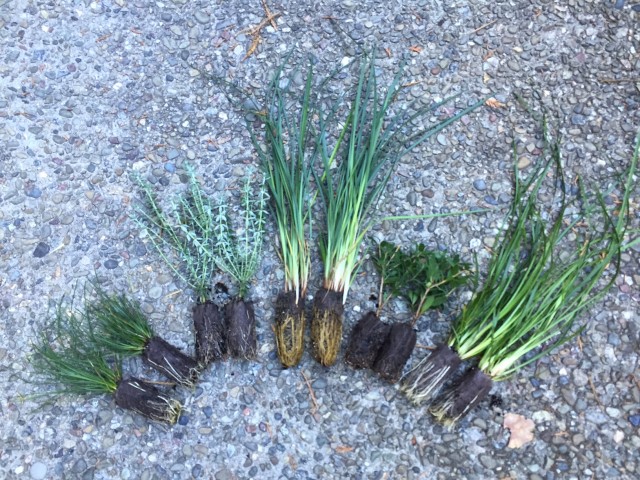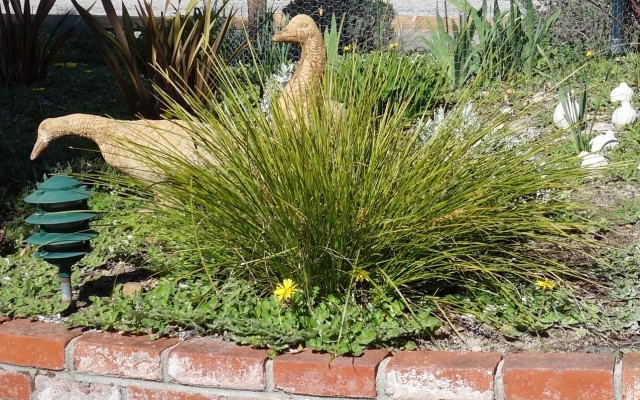
Outside my window a Townsend warbler feasts on suet. It?s a rainy day and my obsession with low water use plants is momentarily taking a break. Each day the soft colors of my fall garden are becoming brighter and more vivid. Backlit leaves take on a whole new look. There are so many ways of combining plants in the garden. I?m taking notes so I remember my favorites to include in my own garden and future designs. Fall is a good time for planting or planning.
Many of my grasses and plants are deciduous and are in the process of going dormant. Even when I mix in broadleaf evergreen plants these groupings lose their impact this time of year. I have only been gardening at this house for a little over a year so the new plants are still young. I?ve had to replant many shrubs and perennials as I was a little cavalier with my gopher basket use. But I persevere as I love color in the garden, especially foliage color.
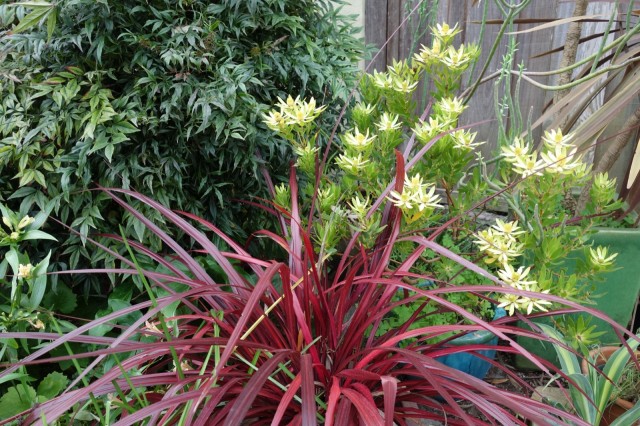
It?s the combinations that look great year-round that hold a garden together. I?ve got two leucadendron that are real troupers when it comes to drought, mucho summer sun, zero winter sun, sandy soil and deer browsing.
The ?Safari Sunset? shows off those vivid burgundy bracts nearly year round with the best show starting during the summer and extending through the next spring. Leucadendron require good drainage and prefer acidic conditions. It?s easy to love this plant to death with too much water. I mulch mine heavily with bark chips. I?m thinking of adding the South African, long-blooming bulbine ?Hallmark Orange? at its feet. The combination of the two guarantee color year round.
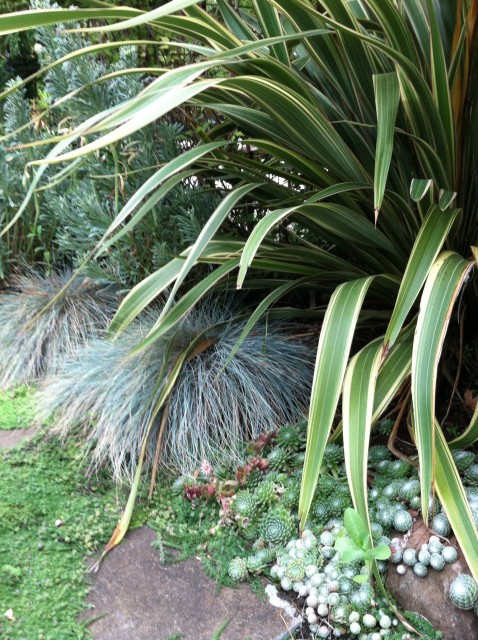
Blue and yellow are another combination that always look good together. You can pick from yellow and gold foliage plants such as phormium ?Yellow Wave?, abelia ?Kaleidoscope?, coleonema ?Sunset Gold? or sedum ?GoldMoss? and pair it with a dwarf blue spruce, blue fescue or blue oat grass, hens and chickens, a blue euphorbia such as ?Glacier Blue? or ?Blue Haze? or the blue-gray succulent senecio mandraliscae.
In these days of converting lawns to low water use landscapes, choosing the right plants is even more important. Use to be a row of foundation shrubs between the lawn and the front windows were the norm. This was not a very inspiring look at best. Think of the possibilities to create a whole new look for your front or back yard.
I like all the colors so it?s hard to whittle down a plant palette to just a few for the whole garden. Breaking up your areas into different ?garden? rooms allows you to pair colors like silver, purple and black in one section using a bronze phormium, a burgundy loropetalum and silver thyme.
In another section of the garden that can be seen from a window might you might want to attract hummingbirds.
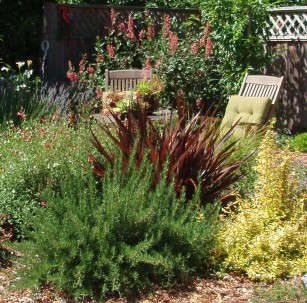
Blooming late in the season the super tough Pineapple sage with eye-popping red flowers combines well with the dark green of an upright rosemary and an Amazing Red phormium for an architectural dramatic touch.
In a garden that inspires you the plants should be ones that you love looking at and taking care of. Some of us like the look of dark green plants while others like grasses that move in the wind. Others are not fans of succulents. Whether you grow plants to feed the birds and attract wildlife or want a little bit of everything there?s a combination of plants that?s perfect for you and your garden.

